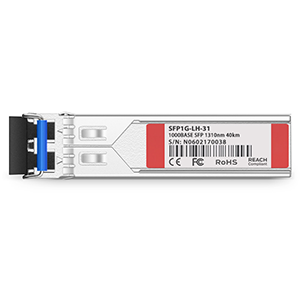I will delve into the definition, influencing factors and optimization methods of channel spacing in DWDM. If you want to learn how to maximize the capacity and performance of your DWDM system and address challenges in wavelength management, this article will reveal the importance of channel spacing and optimization strategies.
In modern communication networks, as the demand for data transmission continues to grow, DWDM technology has become one of the key technologies to achieve high-capacity and high-speed transmission. DWDM achieves high-density transmission of optical signals by transmitting multiple wavelengths (optical channels) on optical fibers at the same time. The channel spacing refers to the spacing distance between adjacent wavelengths, which has an important impact on the performance and efficiency of the DWDM system.
What is channel spacing
Channel spacing refers to the wavelength spacing between adjacent light waves in the DWDM system. In DWDM technology, different light waves can be transmitted simultaneously on the same optical fiber, and each light wave corresponds to a specific wavelength or channel. Channel spacing refers to the wavelength difference between adjacent channels.
The optical signals transmitted in optical fibers are distinguished by wavelength, and the channel spacing defines the separation distance between different wavelengths. Nanometers (nm) are usually used as the unit of channel spacing. Common channel spacings are 100 GHz (0.1 nm) and 50 GHz (0.05 nm).
- The impact of channel spacing on DWDM system capacity and performance:
Channel spacing has an important impact on the capacity and performance of DWDM systems, which is mainly reflected in the following aspects:
-
System capacity: The channel spacing directly determines the number of wavelengths that can be transmitted simultaneously in the DWDM system. Smaller channel spacing provides more optical channels, thereby increasing system capacity. For example, using a 50 GHz channel spacing can transmit more light waves in the same optical fiber compared to a 100 GHz channel spacing, thereby increasing the system’s transmission capacity.
-
Fiber characteristics: The channel spacing is also affected by the dispersion and nonlinear effects of the fiber. Dispersion refers to the difference in transmission delays caused by different wavelengths when light propagates in optical fibers, while nonlinear effects include nonlinear refractive index and nonlinear dispersion of optical fibers. Smaller channel spacing may increase the dispersion and nonlinear effects of optical fiber, resulting in signal distortion and mutual interference.
-
Signal mutual interference: Smaller channel spacing may increase mutual interference between adjacent light waves. In a DWDM system, due to the small spacing between light waves, crosstalk and mutual influence between adjacent light waves may occur. This mutual interference can lead to signal degradation and loss of system performance.
Therefore, when designing and optimizing a DWDM system, it is very important to choose appropriate channel spacing. It is necessary to comprehensively consider factors such as actual needs, fiber characteristics, and system performance requirements to balance factors such as system capacity, signal quality, and cost to achieve efficient and reliable optical signal transmission.
Selection factors of channel spacing
Selecting appropriate channel spacing requires consideration of several factors, including:
-
Fiber dispersion: Fiber dispersion refers to the signal distortion caused by the different propagation speeds of light of different wavelengths when optical signals propagate in optical fibers. Smaller channel spacing will increase the impact of dispersion effects on the signal, so in the case of high fiber dispersion, larger channel spacing may be more suitable to reduce signal distortion caused by dispersion.
-
Optical amplifier characteristics: Optical amplifiers are used to amplify optical signals in DWDM systems, including EDFA (Erbium-Doped Fiber Amplifier) and Raman amplifiers. Different types of optical amplifiers may have different amplification effects on optical signals at different channel intervals. Therefore, it is necessary to consider the characteristics of the optical amplifier and select a channel spacing compatible with it.
-
Optical filter bandwidth: In DWDM systems, optical filters are used to select specific wavelengths or channels. The bandwidth of an optical filter determines the range of wavelengths it can select. Smaller channel spacing may require narrower filter bandwidths to select individual wavelengths, while larger channel spacings may use wider filter bandwidths. Therefore, the bandwidth requirements of the optical filter need to be considered to select the appropriate channel spacing.
-
System capacity and spectrum utilization: The choice of channel spacing is also related to system capacity and spectrum utilization. Smaller channel spacing provides more optical channels, thereby increasing system capacity. However, smaller channel spacing may lead to higher mutual interference and complex system design. Therefore, while balancing system capacity and spectrum utilization, the selection of channel spacing needs to be comprehensively considered.
The optimal choice of channel spacing may vary in different application scenarios. For example, for long-distance backbone networks with long-distance transmission and high capacity requirements, a larger channel spacing may be more suitable to reduce the impact of dispersion and mutual interference on the signal. For data center interconnects with short-distance transmission and lower capacity requirements, smaller channel spacing can provide higher spectrum utilization and flexibility.
Therefore, the optimal channel spacing selection should take into account factors such as actual application requirements, fiber characteristics, optical amplifier and filter characteristics, system capacity and spectrum utilization. In actual design and optimization, performance evaluation and experimental verification may be required to determine the channel spacing that is most suitable for specific application scenarios.
Optimization method of channel spacing
The optimization methods of channel spacing mainly include uniform channel spacing and non-uniform channel spacing.
-
Uniform channel spacing: Uniform channel spacing refers to using equal channel spacing in DWDM systems, such as 100 GHz or 50 GHz. This approach is simple and intuitive, easy to implement and manage. It can provide high spectrum utilization and flexibility, and is suitable for scenarios with high capacity requirements and rich spectrum resources. However, uniform channel spacing may face problems such as nonlinear effects and mutual interference, especially in high-capacity and long-distance transmissions.
-
Non-uniform channel spacing: Non-uniform channel spacing refers to the use of unequal channel spacing in the DWDM system, such as unequal spacing or flexible spacing. This method flexibly selects different channel spacing based on wavelength characteristics and communication needs. Non-uniform channel spacing can be optimized based on factors such as fiber dispersion and mutual interference to reduce the effects of signal distortion and mutual interference. It can provide better transmission quality and system performance, and is suitable for long-distance transmission and scenarios with high signal quality requirements. However, the design and management of non-uniform channel spacing is complex and requires higher system design and configuration costs.
Advantages, disadvantages and applicable scenarios:
-
The advantages of uniform channel spacing are simplicity, ease of use, and high spectrum utilization. It is suitable for scenarios with high capacity requirements and abundant spectrum resources. However, in high-capacity and long-distance transmission, problems such as nonlinear effects and mutual interference may be faced.
-
The advantage of non-uniform channel spacing is that it can be optimized according to fiber characteristics and communication needs, reducing the effects of signal distortion and mutual interference, and providing better transmission quality and system performance. It is suitable for long-distance transmission and scenarios with high signal quality requirements. However, the design and management of non-uniform channel spacing is complex and requires higher system design and configuration costs.
Selecting an optimization method requires comprehensive consideration of specific application requirements, fiber characteristics, system capacity, spectrum utilization and other factors. For scenarios with high capacity requirements and abundant spectrum resources, uniform channel spacing may be a simple and effective choice. For long-distance transmission and scenarios with higher signal quality requirements, non-uniform channel spacing may be more suitable. In actual design and optimization, performance evaluation and experimental verification may be required to determine the most suitable channel spacing optimization method.
Channel spacing and system capacity
Channel spacing has an important impact on system capacity in DWDM systems, mainly reflected in the number of channels and transmission rate.
-
Number of channels: The choice of channel spacing will directly affect the number of channels that can be accommodated in the DWDM system. Smaller channel spacing means there is less space between wavelengths, allowing more channels to be accommodated within a given spectral range. Therefore, a smaller channel spacing usually means a greater number of channels, thereby increasing the capacity of the system. On the contrary, a larger channel spacing will lead to an increase in the spacing between wavelengths, a reduction in the number of channels that can be accommodated, and a corresponding reduction in system capacity.
-
Transmission rate: The choice of channel spacing will also affect the transmission rate of the system. Within a given wavelength range, smaller channel spacing means more channels, which can support higher transmission rates. This is because each channel can carry a smaller bandwidth, allowing more data to be transmitted within the same wavelength range. Therefore, smaller channel spacing is usually associated with higher transmission rates. On the contrary, a larger channel spacing will limit the bandwidth of each channel, thereby reducing the transmission rate of the system.
Emphasis on the importance of channel spacing selection to achieve high-capacity data transmission:
The choice of channel spacing is critical to achieving high-capacity data transmission. Choosing appropriate channel spacing can provide more channel numbers and higher transmission rates within a limited spectral range, thereby increasing system capacity. By increasing the number of channels and increasing the transmission rate, it can meet the growing demand for data transmission and support applications such as high-speed broadband communications and data center interconnection.
In addition, the selection of channel spacing also needs to consider other factors, such as fiber dispersion, mutual interference and filter bandwidth, to ensure system performance and transmission quality. Therefore, when designing and planning a DWDM system, channel spacing selection should comprehensively consider factors such as capacity requirements, fiber characteristics, system performance, and economic costs to achieve effective implementation of high-capacity data transmission.
Channel spacing and wavelength management
Channel spacing plays an important role in wavelength management in DWDM systems, which mainly involves wavelength conversion and wavelength monitoring.
-
Wavelength conversion: Wavelength conversion refers to the process of converting one wavelength to another wavelength in a DWDM system. The choice of channel spacing affects how wavelength conversion is achieved and how efficiently it is achieved. Smaller channel spacing means smaller intervals between wavelengths, requiring finer wavelength conversion. This may require more complex and expensive optics such as wavelength converters or fiber gratings. A larger channel spacing may make wavelength conversion easier to implement, but it also limits the utilization of wavelength resources.
-
Wavelength monitoring: Wavelength monitoring refers to the process of real-time monitoring and management of each wavelength in the DWDM system. The choice of channel spacing affects the accuracy and complexity of wavelength monitoring. Smaller channel spacing means smaller intervals between wavelengths, requiring higher wavelength monitoring accuracy. This may require higher resolution wavelength monitoring equipment and algorithms to ensure accurate detection and management of wavelengths. Conversely, larger channel spacing may make wavelength monitoring easier to implement, but also reduces monitoring accuracy.
Channel spacing selection faces some challenges in wavelength management, and solutions need to comprehensively consider the following aspects:
-
Selection of optical components: According to the selected channel spacing, select appropriate optical components to achieve wavelength conversion and wavelength monitoring. For smaller channel spacing, higher performance and sophisticated optics may be required, such as high-precision wavelength converters and high-resolution wavelength monitoring equipment.
-
Management and control system: Establish an effective wavelength management and control system to monitor and manage the status and performance of each wavelength. This includes real-time monitoring, wavelength allocation, fault diagnosis and other functions to ensure effective wavelength utilization and stable operation of the system.
-
Accurate channel spacing planning: Carry out precise channel spacing planning based on specific application requirements and system characteristics. This requires a comprehensive consideration of factors such as capacity requirements, wavelength conversion complexity, wavelength monitoring accuracy, and cost-effectiveness to find the optimal channel spacing choice.
In summary, the choice of channel spacing has an important impact on wavelength management. Proper selection of channel spacing enables effective wavelength conversion and wavelength monitoring, but also requires addressing challenges such as device selection, management systems, and precise planning. Channel spacing options suitable for a specific application can be found by considering system requirements and technical limitations.
Summary:
Thank you for reading this blog. We have deeply explored the definition, influencing factors and optimization methods of channel spacing in DWDM. Channel spacing refers to the wavelength spacing between adjacent optical waves in the DWDM system, which has an important impact on the capacity and performance of the DWDM system.
When you choose our products, you will receive advanced DWDM solution support, and we are committed to providing high-quality products and services to meet your capacity and performance needs.
DWDM FAQ
A DWDM span refers to the distance between two consecutive amplification points in a DWDM network. It represents the length of fiber optic cable between two regenerative optical amplifiers or other signal regeneration points.
Channel spacing in optical fiber refers to the separation or spacing between adjacent wavelengths or channels used for transmitting optical signals. It determines the frequency difference between each channel and is typically measured in gigahertz (GHz) or nanometers (nm).
In a 50 GHz DWDM system, the channel spacing is typically 50 GHz or 0.4 nm. This means that adjacent channels are separated by 50 GHz in frequency or 0.4 nm in wavelength.
The channel width of DWDM refers to the spectral width or bandwidth allocated to each individual channel in the DWDM system. It represents the range of frequencies or wavelengths used to transmit the signal within a channel. The channel width can vary but is typically around 100 GHz or 0.8 nm.
In CWDM (Coarse Wavelength Division Multiplexing), the channel spacing is wider compared to DWDM. CWDM typically uses a channel spacing of 20 nm, allowing for larger wavelength separations between channels. DWDM, on the other hand, can have much smaller channel spacing, such as 0.4 nm or 50 GHz.
The minimum channel spacing for DWDM depends on the specific system and technology being used. In current DWDM systems, channel spacing can range from 0.4 nm (50 GHz) to as small as 0.8 GHz (100 GHz). However, advancements in technology may lead to even smaller channel spacing in the future.
The typical ITU (International Telecommunication Union) grid assignment for DWDM uses a channel spacing of 100 GHz or 0.8 nm. This means that the frequencies or wavelengths of the channels are separated by 100 GHz or 0.8 nm intervals according to the ITU grid standards.






